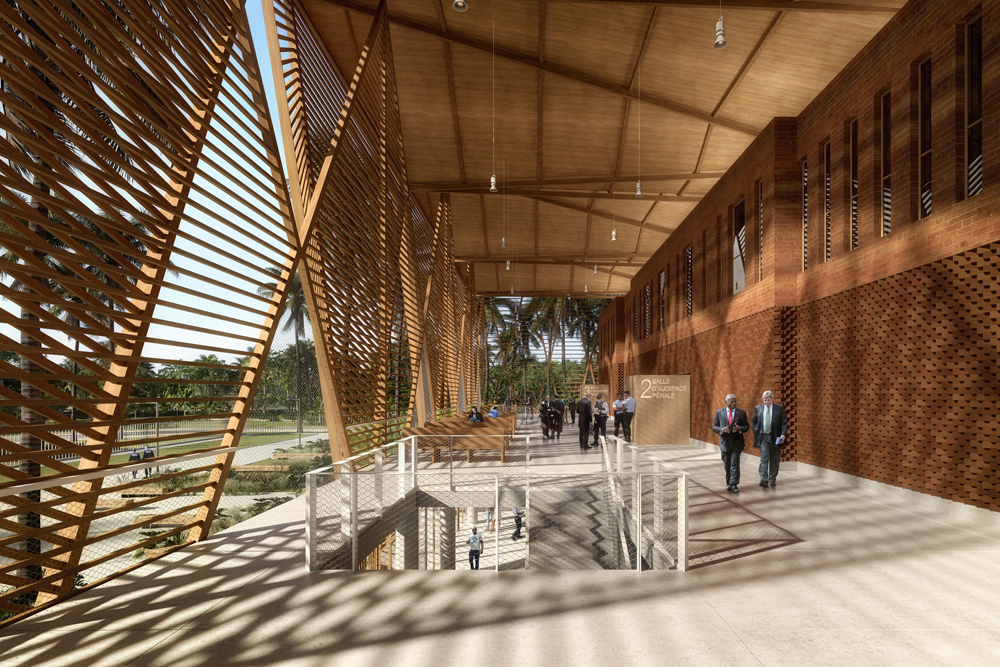[Projects] Architecturestudio and Pizzaroti build the Ministry of Justice campus in Saint-Laurent-du Maroni.
 The creation of a Ministry of Justice complex in Saint-Laurent du Maroni is a symbolic and large-scale project in this town in western French Guiana, located far from the major institutional facilities, and whose history is inseparable from that of the penal colony and French colonisation. The campus expresses a new balance between habitat and nature, as well as a reasoned management of natural resources.
The creation of a Ministry of Justice complex in Saint-Laurent du Maroni is a symbolic and large-scale project in this town in western French Guiana, located far from the major institutional facilities, and whose history is inseparable from that of the penal colony and French colonisation. The campus expresses a new balance between habitat and nature, as well as a reasoned management of natural resources.
 The unusual situation of French Guiana – the only European territory located in South America – creates a specific constraint for the local economy, and notably for construction projects. Materials from industrial sectors are mainly imported from Europe to meet the criteria of European standards, and to compensate for the absence of local industries.
The unusual situation of French Guiana – the only European territory located in South America – creates a specific constraint for the local economy, and notably for construction projects. Materials from industrial sectors are mainly imported from Europe to meet the criteria of European standards, and to compensate for the absence of local industries.
From the outset of the project, the requirement for bio-based and geo-based materials on site appeared to be essential. The nature of the soil, clay-based, and the presence of a nascent raw clay brick industry, allowed us to integrate this material as an input into the project. The use of local, exotic wood was also made possible through a growing local industry, which exploits the resources in accordance with the criteria for the preservation of the Amazonian forest. The project is an opportunity to strengthen the local economic system.
The idea of “the right material in the right place” has been a guiding principle for the project; the use of concrete has been limited to spaces accessible to the inmates, in order to meet the required safety and security criteria.

| Le Palais de justice fait face à l’espace public du nouveau quartier, et constitue le pivot de l’entrée de ville. Son architecture est contextuelle et évocatrice de la culture guyanaise. Une peau extérieure de grandes palmes en bois ajourées abrite des intempéries un volume en terre crue, intégrant toutes les salles du tribunal. Dans l’interstice entre ces deux peaux, la salle des pas perdus est naturellement ventilée, balayée par les alizés, ouverte sur le paysage.
|

